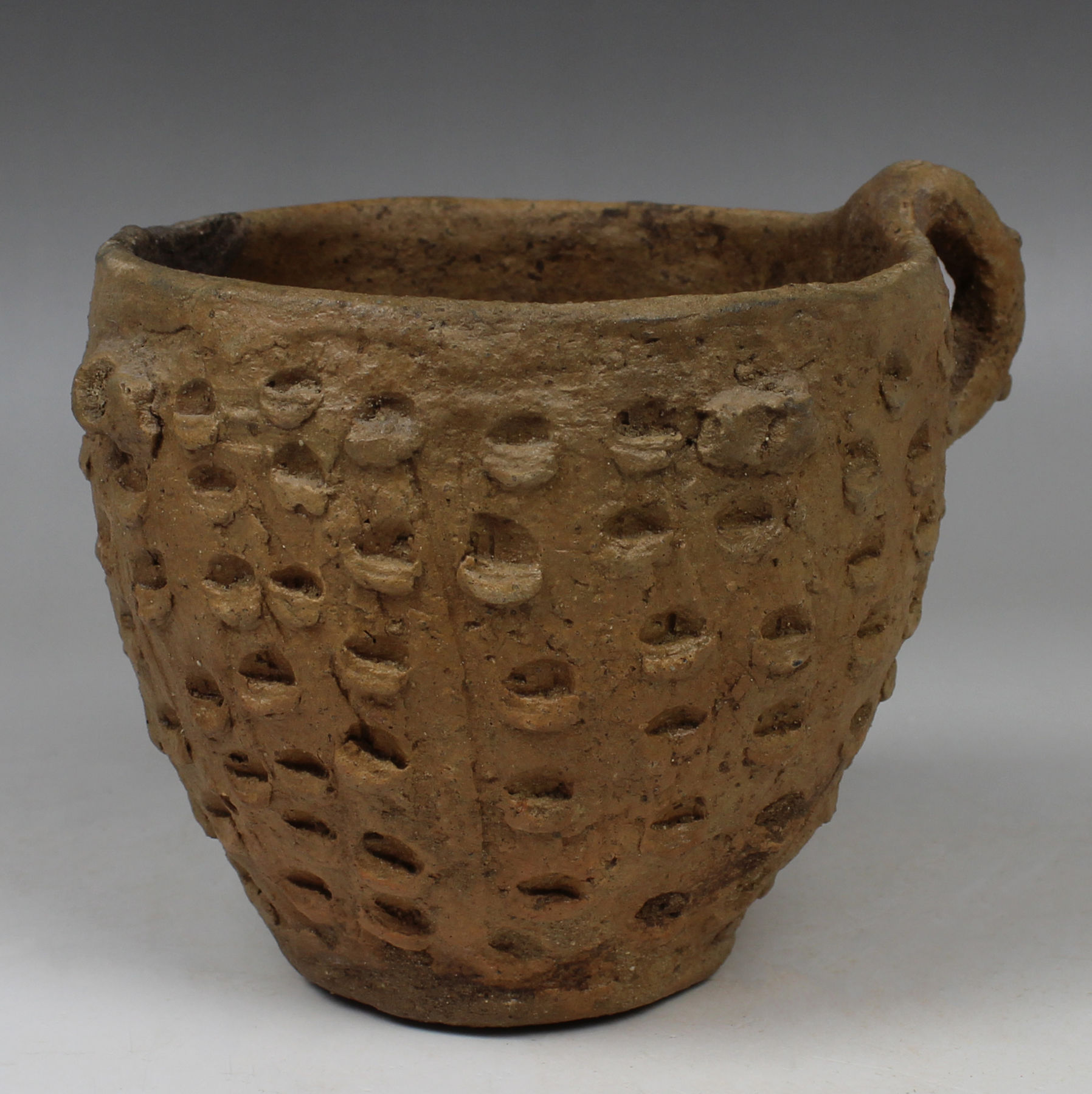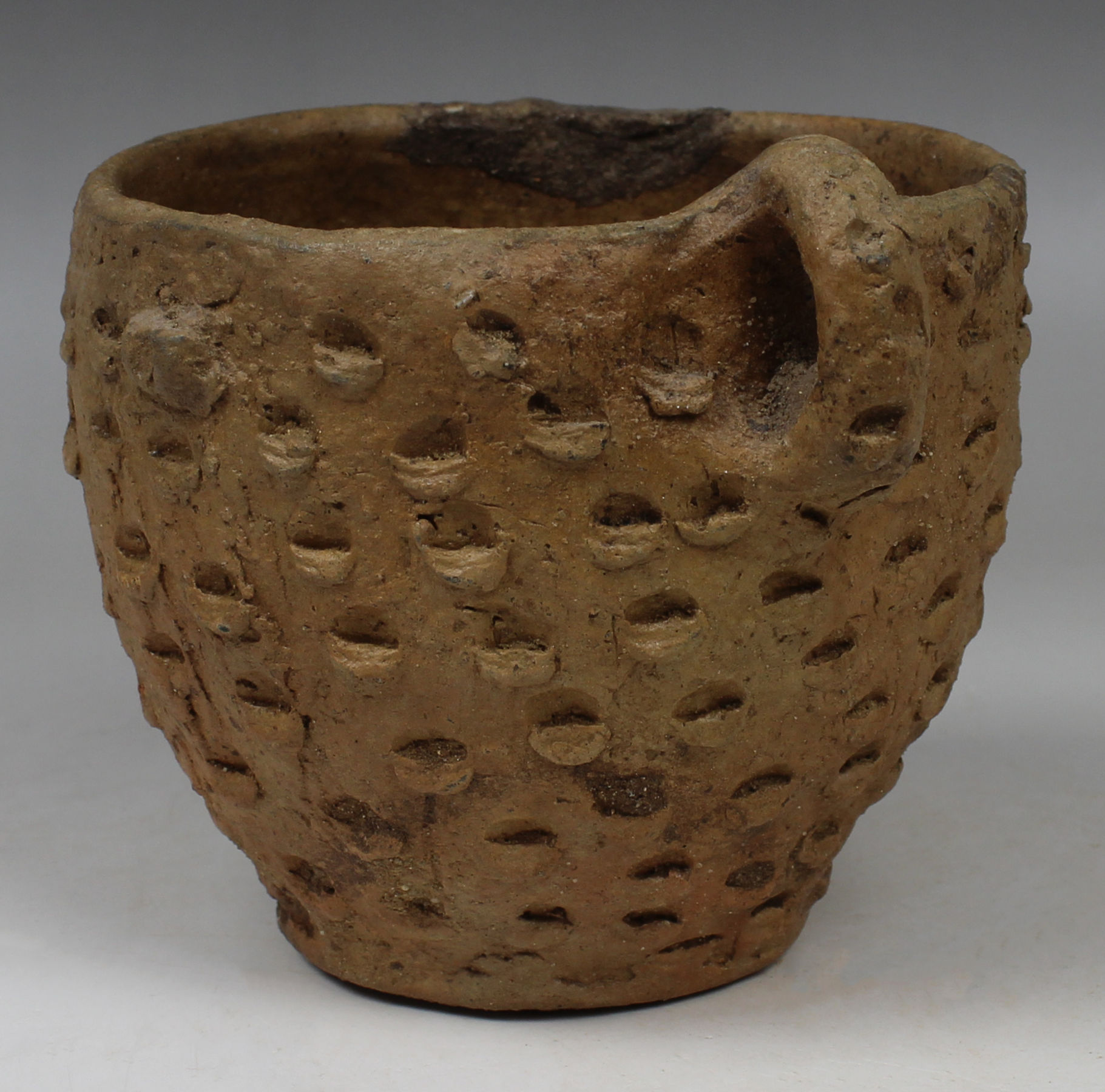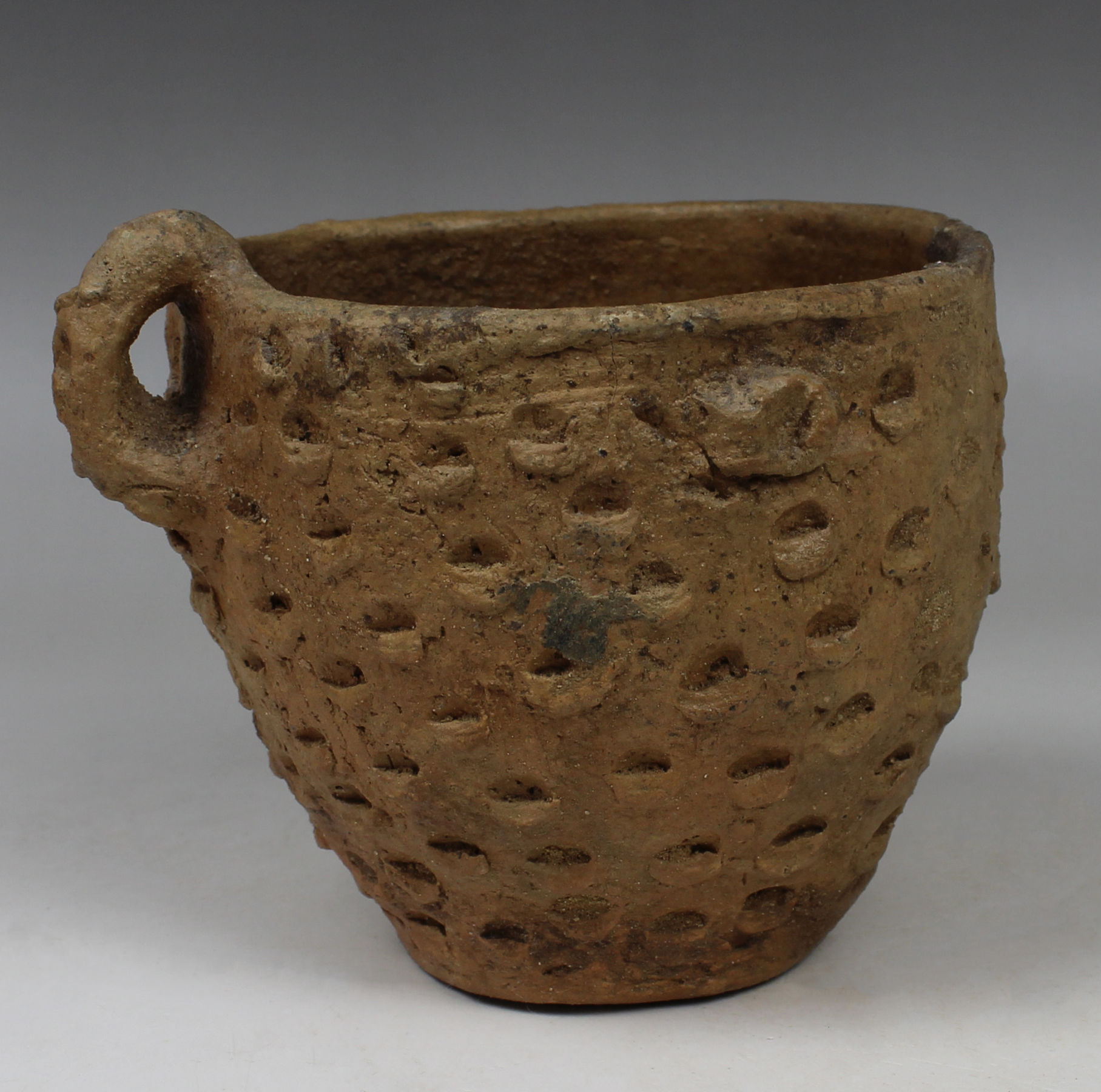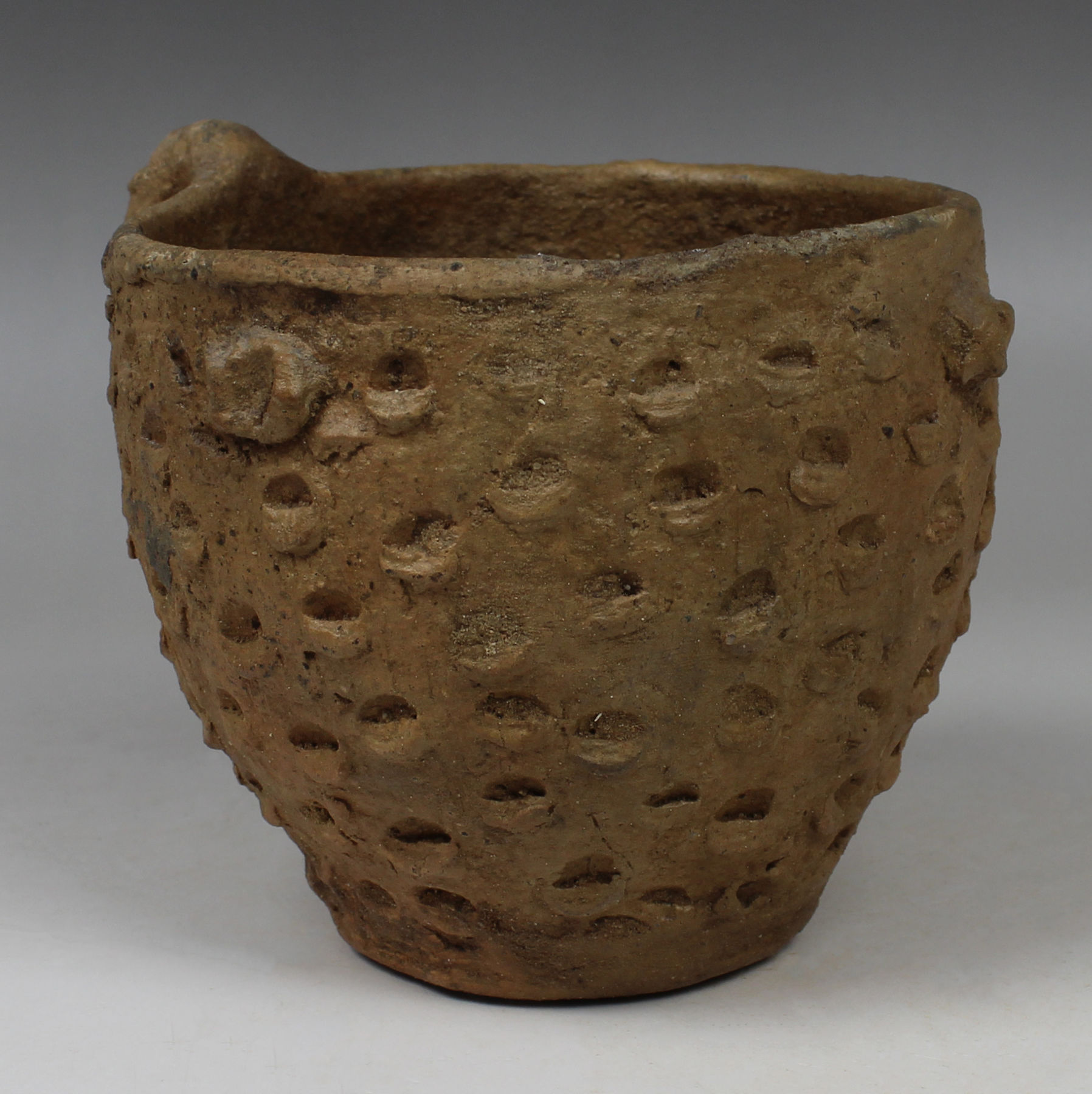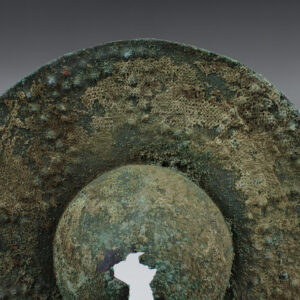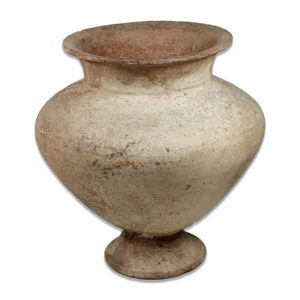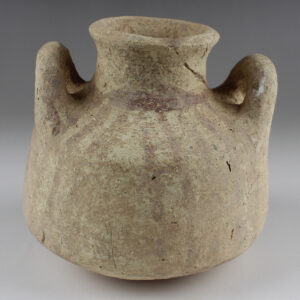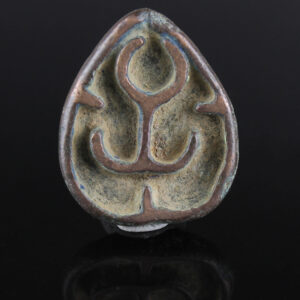Description
| ITEM | Single handled beaker with knob decoration |
| MATERIAL | Pottery |
| CULTURE | Bronze Age, Europe |
| PERIOD | 1200 – 750 B.C |
| DIMENSIONS | 102 mm x 135 mm |
| CONDITION | Good condition |
| PROVENANCE | Ex German private collection, S.N. Acquired from H.H. auction in 2011 |
Bronze Age pottery in Europe is a key archaeological indicator of the technological advancements and cultural developments that took place during this prehistoric period, which typically spans from around 3200 BCE to 600 BCE. Bronze Age pottery reflects significant shifts in material culture, particularly the transition from the Neolithic era’s simple, handmade ceramics to more sophisticated, wheel-thrown vessels. Pottery production during the Bronze Age exhibited a variety of regional styles and forms, highlighting the diversity of cultures across Europe. Common types of pottery included beakers, bowls, and amphorae, often adorned with distinctive decorative motifs such as geometric patterns, incised designs, and stylized representations of animals or human figures. Additionally, the Bronze Age witnessed the emergence of unique pottery traditions in different regions, like the Bell Beaker culture in western Europe and the Unetice culture in Central Europe, each with its own distinctive pottery styles and technologies.
Bronze Age pottery played a vital role in daily life, serving as containers for storage, cooking, and as ritual or grave goods. It is also a valuable source of information for archaeologists, as the analysis of pottery fragments can reveal insights into trade, technology, and cultural connections across ancient Europe. The sophistication of Bronze Age pottery reflects not only advances in ceramic production but also the increasing social complexity and interactions among various European societies. This era laid the foundation for the subsequent Iron Age, which would bring further transformations in pottery and European culture.


